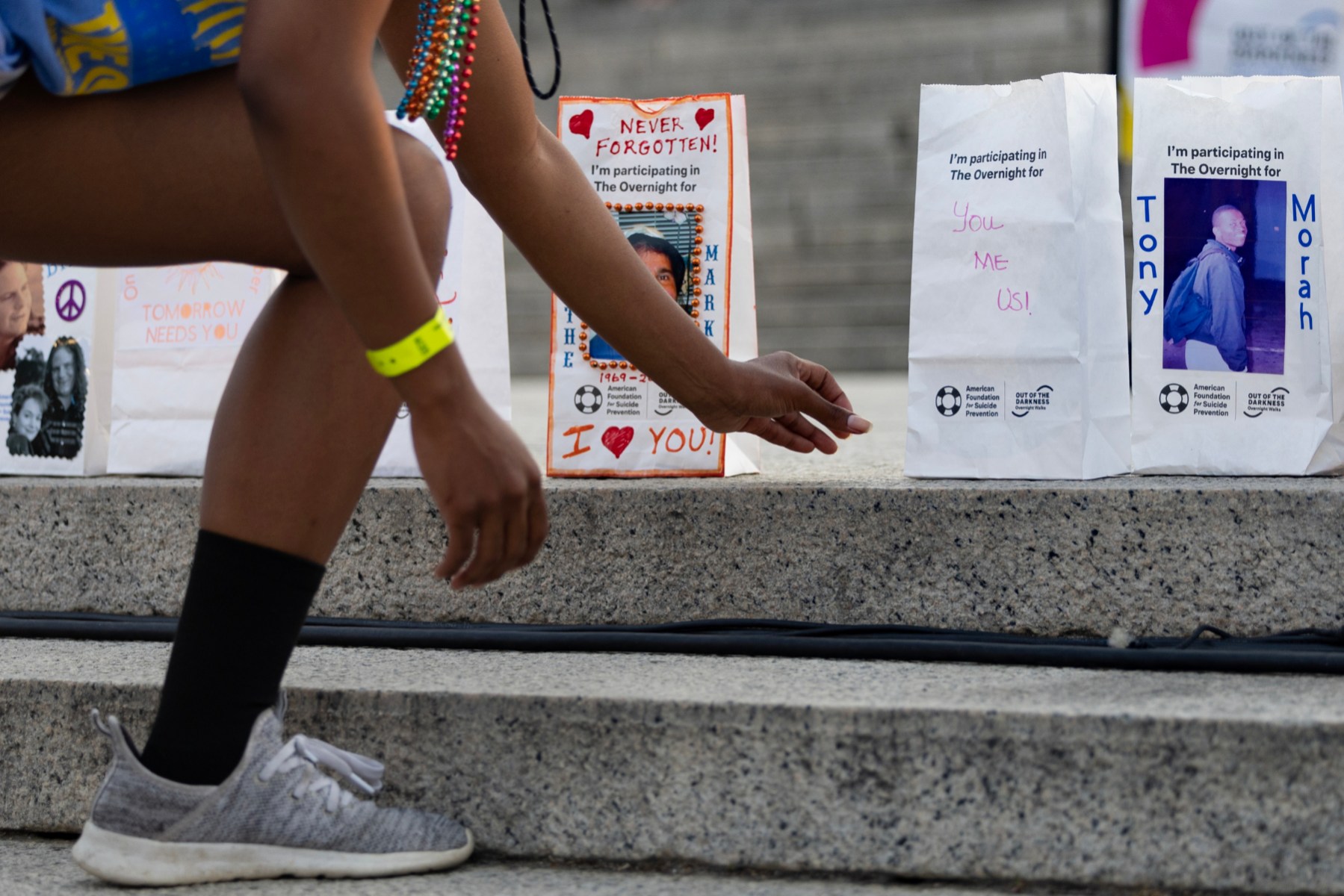If you or a loved one are in crisis, please call the National Suicide Prevention Lifeline at 1-800-273-TALK (8255), or contact the Crisis Text Line by texting TALK to 74174.
At The 19th, we’re committed to publishing journalism that you can trust throughout the critical moments that shape our democracy and our lives. Show your support during our Fall Member Drive, and your donation will be matched. Double your gift today.
The total number of suicides reached nearly 50,000 in 2022 — the highest number recorded in United States history, according to Centers for Disease Control and Prevention data published this week. Even though the total number of men who committed suicide outpaced women 4 to 1 in 2022, the suicide rate for women increased twice as much as men from 2021 to 2022. The suicide rate of women increased 4 percent from 2021; for men, it increased by 2 percent.
All age groups for women 25 and older experienced an increase in suicides, with a significant increase for those between 25 and 34. In the 10 to 14 age group, the suicide rate for men declined 13 percent and declined 22 percent for women; in the 15 to 24 age group, the rate for men decreased 9 percent and decreased 3 percent for women; for the 25 to 34 age group, the rate for men decreased 4 percent and increased 7 percent for women; for the 35 to 44 age group, the rate for men increased 3 percent and increased 5 percent for women; for the 45 to 54 age group, the rate for men increased 6 percent and increased 2 percent for women; for the 55 to 64 age group, the rate for men increased 10 percent and increased 5 percent for women; for the 65 to 74 age group, the rate for men increased 3 percent and increased 7 percent for women; and for the 75 and older age group, the rate for men increased 4 percent and increased 9 percent for women.
The CDC also noted that the number of women suicides is likely higher than reported because their deaths more frequently involve drug poisonings, which take longer to identify as suicides.
The 19th spoke to psychologists, social workers and mental health experts to discuss possible factors contributing to increased suicide rates among women. Many pointed to the COVID-19 pandemic, increasing financial strains and a deluge of caretaking obligations.
Ashley Rondini, an associate professor of sociology at Franklin & Marshall College, said that these patterns are consistent with increases in suicide rates for women globally since the start of the pandemic.
“A combination of factors such as intensified caretaking responsibilities, extended periods of financial instability and increased vulnerability to domestic violence in the context of social isolation in the home, has had deleterious collective impacts on women’s mental health and vulnerability to depression over the past several years,” Rondini said.
Arielle Scoglio, an assistant professor of health studies at Bentley University, said it’s also important to remember how some of the pandemic mitigation strategies caused “social isolation and erosion of social support” for many.
“Suddenly, people had less access to helpers who might identify warning signs for suicide in workplace, school, health care settings, community service settings. Perceived social support and community engagement are known protective factors against suicide.”
Scoglio said women of childbearing age, in particular, also saw less support and increased adversity due to the pandemic: job losses, relational conflicts, lack of child care, food and housing insecurities.
Hyeouk Chris Hahm, an associate dean for research at Boston University School of Social Work, said that suicide is associated with a complex combination of individual, interpersonal and societal factors, making it difficult to pinpoint exact causes. Still, Hahm also mentioned the losses of the pandemic — in addition to a loneliness epidemic, substance use disorder and financial strains in young adulthood — as potential contributors to deteriorating mental wellness and subsequent increased suicide rates.
“Especially among young adults in the U.S., these stresses are often linked to high college costs, student loans and escalating living expenses,” Hahm said. “In addition, the current housing crisis, characterized by a lack of affordable options and high mortgage rates, further crushes many young adults’ dreams of homeownership.”
Men and women in nearly every age and race category have seen increases in suicide rates during the 21st century, leading the U.S. surgeon general in 2021 to issue a call to action on a national strategy for prevention.
Some experts did note positive signals and possible solutions.
Jessica Provines, the assistant vice president of wellness and chief psychologist at Wichita State, has worked in suicide prevention for two decades and helped spearhead Suspenders4Hope, a prevention program with national reach. Provines noted the United States didn’t have a national strategy to address suicide as a public health issue until 2012. But she was encouraged to see the suicide rates for Native American and Alaska Native populations decrease 8 percent in the latest CDC data, a sign that interventions can be successful.
“These high-risk groups have received a lot of resources and focus from suicide prevention efforts, and it indicates to me when prevention efforts are targeted and sustained, we can see positive outcomes on this tragic and painful issue,” Provines said.
It’s also important to continue working to define and track suicides as a cause of death, experts said. For so long, stigma and a lack of clear definitions made it hard to accurately track the problem. The increase in numbers might be attributable to better records, and Provines said instead of getting “too alarmed by these numbers,” we should be focusing on sharing survivor stories and ending stigma to let people know they are not alone and there is hope.
“It’s more important to expand prevention efforts and raise awareness of how common suicidal ideation is with 12.3 million Americans reporting ideation in 2021,” Provines said. “The vast majority of those individuals found a way to survive that crisis. They reached out to the 988 crisis line, left a toxic environment or received treatment.”
Dr. Brooks Keeshin, the director of the Safe & Healthy Families Clinic at the University of Utah, said there also needs to be stronger efforts around suicide death prevention on a national level.
“There needs to be more research into risk, more programs targeting those with known risk factors, better ways to screen and more timely data so that we can shift and enact policy more quickly,” Keeshin said. “We should not rely on data that, in part, was collected nearly two years ago to inform decisions today.”







